Reportedly the annual Aldersgate Renewal Ministries (ARM) convocation that just concluded here in Charleston, WV attracted over 1000 participants, including many youth and young families. Founded in 1977, ARM is the officially recognized United Methodist ministry for charismatic worship. So worship here at the Charleston Civic Center was quite exuberant, of course, with lots of arms upraised, and many waving flags and banners amid the rousing praise music.
Brazilian Methodist Bishop Carlos Lopes was among the major speakers. The Methodist Church of Brazil, which has been autonomous since the 1930’s, was stagnant in membership for some years. Liberal theology, and failure fully to embrace the Pentecostal spirit that continues to sweep much of Latin America, I suspect, was at least part of the explanation. But now Methodism in Brazil is growing again and apparently up to 200,000 members. No doubt Bishop Lopes, who was elected in 2006 as president of Brazil’s Methodist bishops, has played a role in this revival. He seems pretty young though he was elected bishop 15 years ago. He serves on the board of the Atlanta based Mission Society that chiefly serves evangelical United Methodists.
Among other participants and workshop leaders here at the ARM convo were three professors from United Methodist United Theological Seminary in Dayton, Ohio. Previously pretty liberal, United is undergoing a fairly dramatic renewal accompanied by commitment to evangelical renewal within United Methodism. United was the only United Methodist seminary to have a display table here.
After attending early morning worship with ARM Sunday morning, I walked to a nearby downtown United Methodist congregation for 11am worship. St. Mark’s is a stately old sanctuary, and the original congregation, which belonged to the old Methodist Episcopal Church, South, dates back 150 years or more. Present were many persons, including at least one bishop, in town for the Northeast Jurisdictional Conference, which starts this week and which will elect several new bishops. The church, including both pastors, was very friendly. One little girl, during the meet and greet, ran into my pew to envelope me in a long hug.
The senior pastor is Monte Brown, who is apparently an episcopal candidate himself this year, endorsed by the West Virginia Conference. His church’s theme is: “Each of us is a beloved child of God, precious and beautiful to behold,” and he emphasized this theme in his sermon. Essentially Brown was critical of the perspective that persons are by nature fallen and sinful. Instead he urged emphasis on each person’s reputed “destiny” as a child of God. Brown cited even convicted child abuser Jerry Sandusky formerly of Penn State as a “child of God, precious and beautiful to behold.”
Undoubtedly Sandusky is a creature of God, made in His image, and a person for whom Christ died. We can pray that Sandusky, from his prison cell, where hopefully he will justly remain for many decades, will someday recant the enormous evils he has committed and accept God’s invitation to become His child. But is Sandusky currently “beautiful to behold?” Rev. Brown’s sermon seemed to minimize if not deny the need for each person to accept the invitation to become God’s child. Traditionally Methodists have believed that each person, by God’s grace, has the freedom to accept or deny this invite. John Wesley, quoting St. Paul, believed we are by nature “children of wrath,” delivered only by God’s action through Christ on the Cross, which we may freely embrace or reject.
So the message at Rev. Brown’s church, or at least in this Sunday’s sermon, seemed very different from the primary message down the street at the ARM convo, where personal redemption and transformation through Jesus Christ were the chief emphases. It was a fascinating, contrasting morning, illustrating different sides of United Methodism.
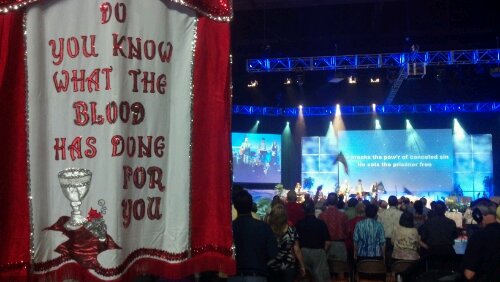
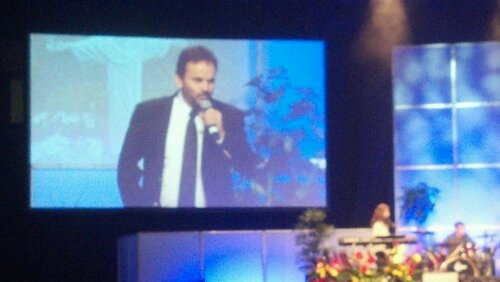
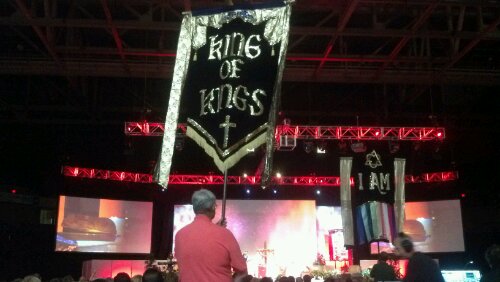
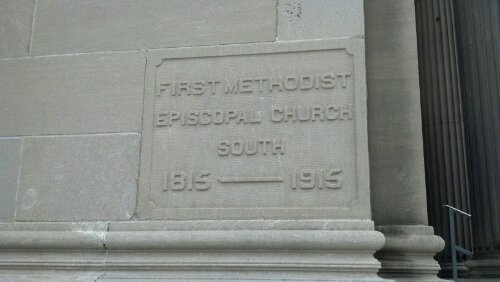
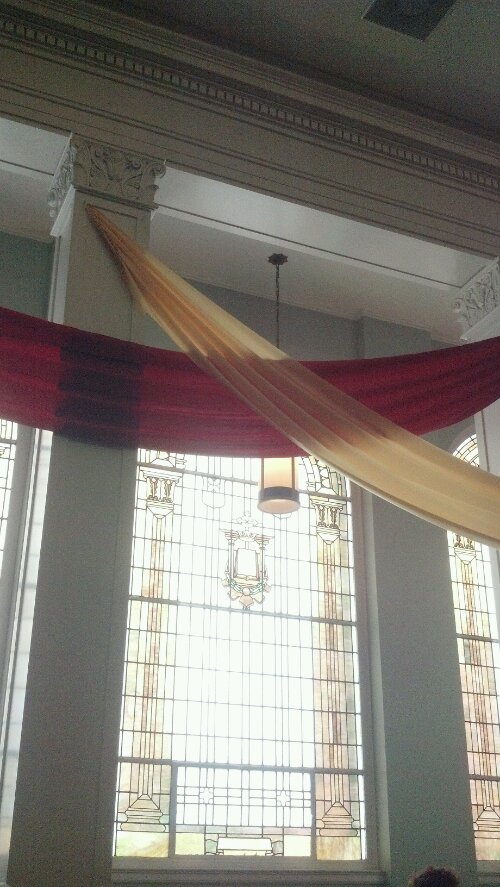




Comment by Kevin Condon on July 16, 2012 at 11:36 am
I’ve been to many UM churches, from the Outer Banks screened in ones to San Diego downtown cathedral. Those churches that grow don’t impose “fresh ideas” that reject God’s righteousness. They acknowledge that we have all sinned and fallen short and need the redemption offered through the blood of the lamb. Without Passion week, there is no joy in Easter. I like the C.S. Lewis formulation better. Everyone we meet, if we could see him or her in their posthumous eternal glory would surprise us as a either a bright spiritual being or a hideous monster, depending on their acceptance of the sacrifice of Christ. So, make disciples. don’t make people feel good about themselves. Help them feel joyful about what they could be.
Comment by Jim Rice on July 20, 2012 at 9:19 am
Well said